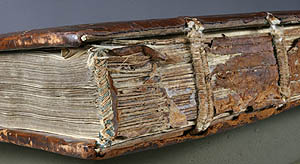The Gough Map, held at the Bodleian Library, is internationally-renowned as the earliest map to show Britain in a geographically-recognizable form. Yet questions remain of how the map was made, who made it, when and why. Linguistic Geographies is an AHRC-funded research project that seeks to address these key questions.
As the project proceeds during 2010, its website will develop with the ultimate aim of providing online access to the Gough Map, and a searchable database of the place-names that the map contains. The project will conclude with an exhibition and colloquium at the Bodleian Library in June 2011, on the topic of “The language of maps”.
The Gough Map’s origins are uncertain, including who made it, how, where and why? This project seeks to address these questions by using an innovative approach to explore the map’s ‘linguistic geographies’, that is the writing used on the map by the (unknown) scribes who created it. This technique involves specialist palaeographic and linguistic skills that are normally applied to text manuscripts, but with this project they are being tried on a map manuscript, somewhat experimentally, with the aim of not only finding more about the Gough Map’s making but also the transferability of particular methods from linguistic to cartographic history.
The project involves a group of researchers from across three UK HEIs, each bringing distinctive skills and expertise to bear. Each has an interest in maps and mapping, though from differing disciplinary perspectives, from geography, cartography and history. Their aim is to learn more about the Gough Map, specifically, but more generally to contribute to ongoing intellectual debates about how maps can be read and interpreted; about how maps are created and disseminated across time and space; and about technologies of collating and representing geographical information in visual, cartographic form.
One of the main project outcomes will be the web-resource through which the Gough Map will be made more widely accessible, and through which the data and findings of this project will be made freely available. This will help others to develop the research, whether in academic or non-academic sectors. As well as the web-resource, the project will provide the basis for a public exhibition on the Gough Map, to be held at the Bodleian at which a colloquium will provide a forum for discussion on the language and linguistics of medieval maps and mapping.
The project website is at:
The project partners are:
Queen’s University Belfast
Bodleian Library, University of Oxford
King’s College London
The project is running for 15 months, having commenced on 1 April 2010, and is part of the Arts and Humanities Research Council’s ‘Beyond Text’ programme.
Nick Millea
Map Librarian, Bodleian Library
See conservation of the Gough Map :









 29 January: Mme Isabelle de Conihout (Bibliothèque Mazarine, Paris) spoke at the Seminar on the History of the Book about ‘The beginning of collecting printed chivalric romances in seventeenth-century France’ She discussed the collection of Daniel Dumonstier (1574-1646), painter, collector of natural history and musical instruments, and of books. He had an especially good collection of chivalric romances, the stories of valiant knights such as Amadis de Gaule and King Arthur. In his copy of Ludovico Ariosto’s Orlando furioso, (Venice: Vincenzo Valgrisi, 1560), recently acquired by the Bibliotheque Mazarine with the help of the Breslauer Foundation, he wrote a “Catalogue de tous mes romans” subdivided into 56 French, 11 Italian and 14 Spanish. It contains some 80 titles of mostly chivalric romances; the medieval component is very noticeable, with 35 Gothic romances out of 72 known titles; what he did not collect were sentimental romances in translation, mock-heroic and antiquity romances.
29 January: Mme Isabelle de Conihout (Bibliothèque Mazarine, Paris) spoke at the Seminar on the History of the Book about ‘The beginning of collecting printed chivalric romances in seventeenth-century France’ She discussed the collection of Daniel Dumonstier (1574-1646), painter, collector of natural history and musical instruments, and of books. He had an especially good collection of chivalric romances, the stories of valiant knights such as Amadis de Gaule and King Arthur. In his copy of Ludovico Ariosto’s Orlando furioso, (Venice: Vincenzo Valgrisi, 1560), recently acquired by the Bibliotheque Mazarine with the help of the Breslauer Foundation, he wrote a “Catalogue de tous mes romans” subdivided into 56 French, 11 Italian and 14 Spanish. It contains some 80 titles of mostly chivalric romances; the medieval component is very noticeable, with 35 Gothic romances out of 72 known titles; what he did not collect were sentimental romances in translation, mock-heroic and antiquity romances.